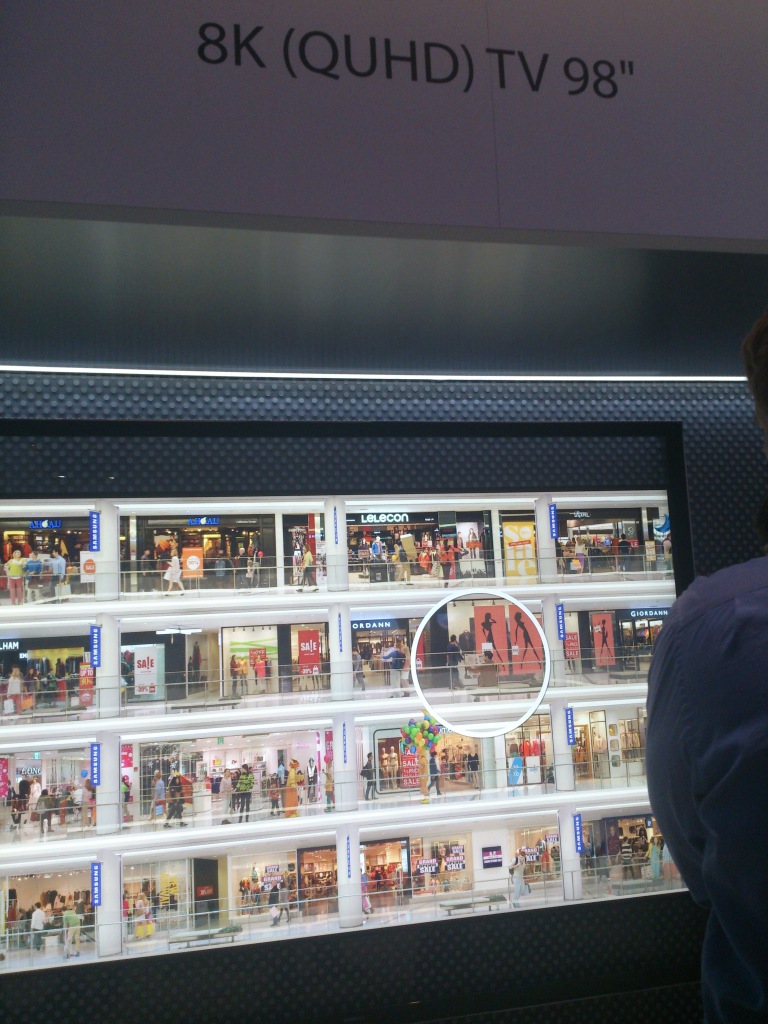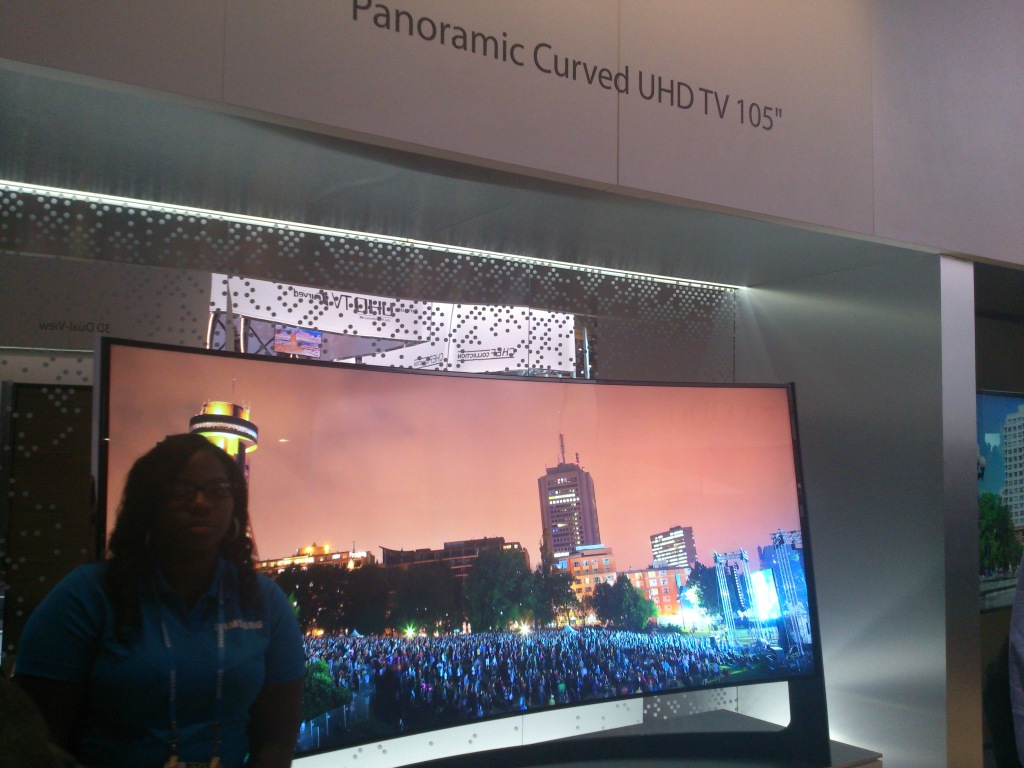Consumer Electronic Thoughts: TV and Monitor Trends
You ever think you’ll never catch up on the latest electronic trends, and that things are moving at an alarming rate? Not only are you right and not alone, you probably don’t even know just how far behind you might be. No. Seriously. 8K TV was demo-ready in 2014. Shit’s intense. Don’t worry. It’s all the worst gimmicky gimmicks ever.
If you’re a PC gamer, you know the stress of trying to keep up with the latest RAM, graphics cards, processors, etc. You probably agonize over finally getting the latest NVidia card, just to have them announce the next one a month later and now your card is worth half what you paid and already “obsolete”. However, if you’re more just into cool TVs, maybe you sleep at night just fine knowing your TV is alright. It might not be the best, but it’s not dead yet, and really, that’s what matters. Even if trends are 4K and 3D and CURVED, those are shitty buzzwords that ultimately will be rendered useless in just a few years.
Case in point: the 1080p widescreen standard is the biggest thing to happen to TV in years. But there are still huge swaths of the US that still run 4:3 tubes, and even more places that don’t offer HD programming for whatever reason (widescreen, sure, but not even 720p). And yet, not only are companies trying to push 4K on the masses, but 8K was demo ready to the public in 2014. Yup. 2 years ago already. And odds are you don’t even have a “smart” TV (which really isn’t that great, promise).
The technology will always outpace the market. In the past, a good tube tv could be viable for several decades if well taken care of. But now, you’re lucky if your tv doesn’t seem old less than 5 years later. Yet, all this bleeding edge tech is for naught. Take the “resurgence” of 3D. After 1080p and 720p dropped and became the only things you could buy in a store, everyone clamored that “smart” TVs were the Next Big Thing. When I bought my flat screen a couple years ago, it was nearly impossible to get a not-smart TV that was of decent quality. The “smart” functionality is shoddy at best, and for $30 you can get a Chromecast and have a way better and nearly as seamless experience in terms of streaming content. Non-smart TVs are coming back, hard, since everyone realized almost anything they plug into a TV nowadays has a Netflix client anyways, and probably runs better. Then everyone was all “3D is the FUTURE!” 3D tvs, the 3DS, 3D blu rays, special reusable 3D glasses, you name it, it was there. Then BAM dropped like a hot uh… thing. It was still plagued by the problems it always has been (distortion, bad for those with certain vision problems, not really adding much to the experience), and was now combined with a lack of viable content, extra cost, and honestly being subpar on the small screen. Now we’re on that 4K and curved screen hype train, and guess what? Same shit. Why? Well, first off, are DVDs still a thing being made for new home release movies? Yes? Then that’s 480p at best. Meaning a substantial amount of the market isn’t even at blu ray level, rendering 4K (with 4 times the resolution of 1080p) useless to them. Not to mention that 4K blu rays are just now starting to maybe materialize. “But what about Netflix and other streaming services?” I hear you mutter quietly to your screen. That brings in the fact that our internet speeds are god awful in this country, plus bandwidth caps, and limited content. So, available, yes, viable, no.“Well, why hate on curves?” Oh man, I am ready to answer that. I don’t hate the concept of a curved screen, the idea being that it fills your peripheral vision better than a large flat screen. Totally makes sense, it’s why IMAX screens are curved. But ultimately, the curve appeal (hah, I made a funny), is pointless. On a screen under 60 inches, especially with a curve of less than 10 degrees, there’s absolutely no point in it. Got a big enough screen and a deep enough curve? Cool. You’re now going to have to be in the dead center of the screen, pretty close to it, for it to be beneficial. Sit off to one side, risk weird distortion. Sit far away (more than say 4-6 feet), and there’s no negligible difference to a flat screen. Even in the most ideal situation, a 27 inch computer curved computer monitor I sat 18 inches from, dead center, was ultimately useless in being a “more immersive screen”. The reason an IMAX screen works is the size, and even then, sitting off to one side makes the screen look funny.
The only instance where I think higher than 1080p resolution screens are viable are PCs, and maybe phones (and that’s a high maybe). PCs can and do have content and programs that could utilize the extra resolution, and phones, well, Retina displays and all. Curves however, only if you have a massive screen. We’re talking in excess of 100 inches. And you’re dead center from it, and it can encapsulate you a bit, and you’re the only one watching. Then yeah, that’d be rad! Both are utterly pointless, and buzzwords to get you to buy a new tv when odds are yours (assuming you’re at least on 1080p) are fine. This doesn’t mean these things aren’t nice; my mom bought a 4K curved tv and it’s lovely. But they’re not worthwhile if you can get you a 70 inch Samsung 1080p tv for $800. So much savings!Let’s face it though, if you’ve got a halfway decent LCD/LED flatscreen running at 1080p with a blu ray player or some sort of way to stream Netflix, you’re probably fine. Don’t let these buzzwords with no content fool you. And we all know we’re getting ocular implanted miniscreens in the future so it doesn’t matter anyways.

![20160107_090927_HDR[1]](http://anarchymarie.com/wp-content/uploads/2016/02/20160107_090927_HDR1-1024x576.jpg)
![20160107_094305_HDR[1]](http://anarchymarie.com/wp-content/uploads/2016/02/20160107_094305_HDR1-1024x576.jpg)

![20160107_091757_HDR[1]](http://anarchymarie.com/wp-content/uploads/2016/02/20160107_091757_HDR1-1024x576.jpg)
